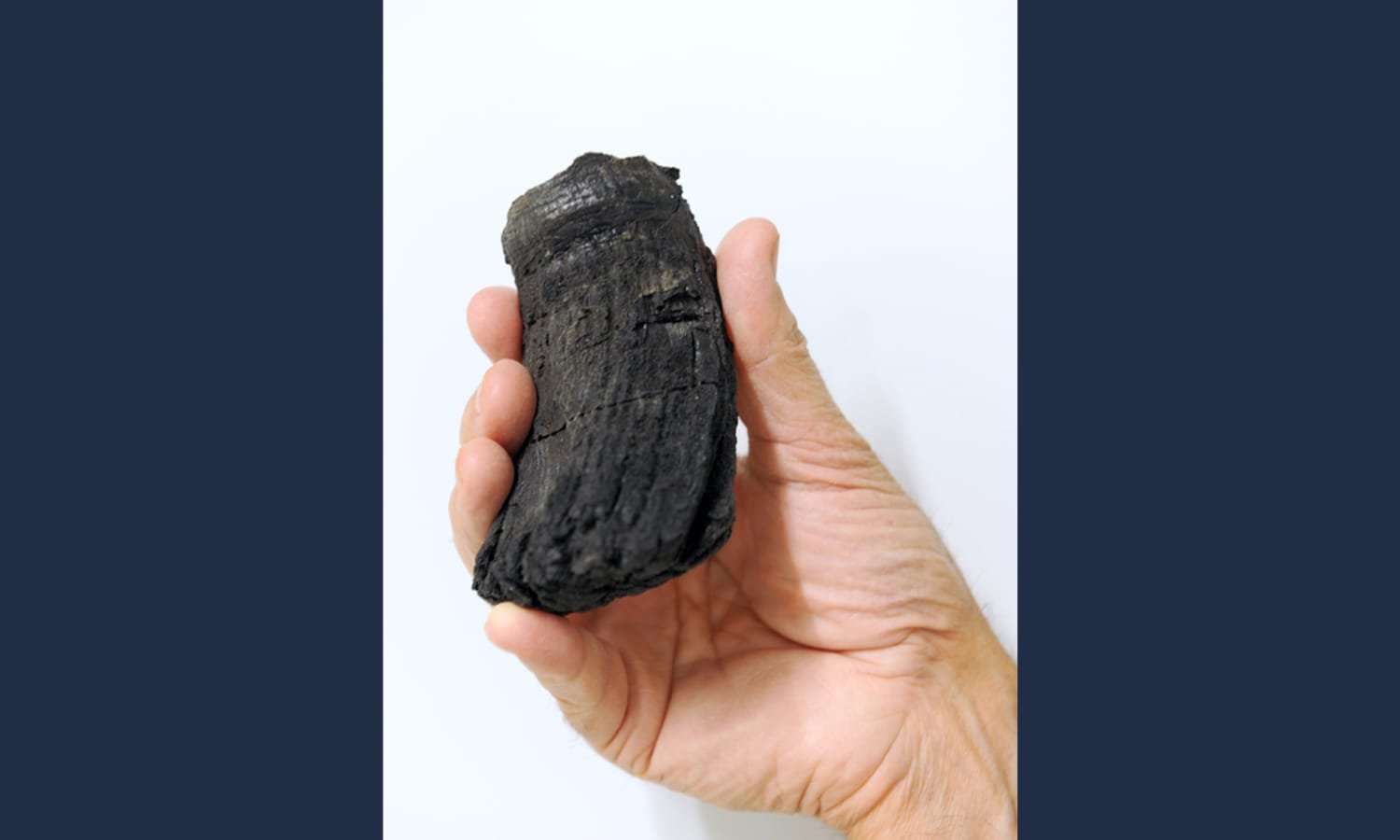A huge fossilized tooth from an ancient marine reptile uncovered in the Swiss Alps may be the largest of its kind ever discovered, a new analysis found.
The fossil — which is just a fragment of the full tooth — is part of a set of rare remains from extinct giant ichthyosaurs, carnivorous sea creatures that lived more than 200 million years ago. The fragment measures about 4 inches long and has a root twice as wide as that of any other known aquatic reptile, according to research published Wednesday in the Journal of Vertebrate Paleontology.
The report sheds new light on the mysterious behemoths, including their impressive size, how they lived and what they ate.
“It amounts to a major embarrassment for paleontology that we know so little about these giant ichthyosaurs despite the extraordinary size of their fossils,” the study’s lead author, Martin Sander, a paleontologist at the University of Bonn in Germany, said in a statement.
In the study, Sander and his colleagues revisited a trove of Triassic Period fossils first unearthed more than 30 years ago by Heinz Furrer, a retired curator at the University of Zurich’s Paleontological Institute and Museum. Furrer’s collection, gathered from 1976 to 1990, turned out to include the largest ichthyosaur tooth ever discovered.
Furrer, a co-author of the study, also uncovered other fossils, including large vertebra and rib fragments from a second ichthyosaur and seven large vertebrae from a third.

The fossils were discovered in a part of the Swiss Alps known as the Kössen Formation, which is nearly 9,200 feet above sea level. Rocks there formed the bottom of a long, shallow coastline more than 200 million years ago.
The findings may help scientists better understand what giant ichthyosaurs fed on and how the whale-size creatures captured prey.
It’s just the second time that fossilized teeth from a giant ichthyosaur have been found, the researchers said. That is most likely because the marine reptiles were mostly toothless, filtering out and eating tiny creatures in the water similar to the way blue whales feed, Sander said.
The study suggests, however, that some giant ichthyosaurs in the Late Triassic Period may have been predators with teeth. If so, that would put them among the largest carnivores to have ever roamed the planet. Still, Sander said, it’s difficult to accurately gauge the size of animals based solely on measurements of dental fossils.
“It is hard to say if the tooth is from a large ichthyosaur with giant teeth or from a giant ichthyosaur with average-sized teeth,” he said.
Sander added that he hopes the research leads to the discovery of more and better ichthyosaur fossils in the Alps and other remote places.
“Maybe there are more remains of the giant sea creatures hidden beneath the glaciers,” he said.
Source: | This article originally belongs to Nbcnews.com









